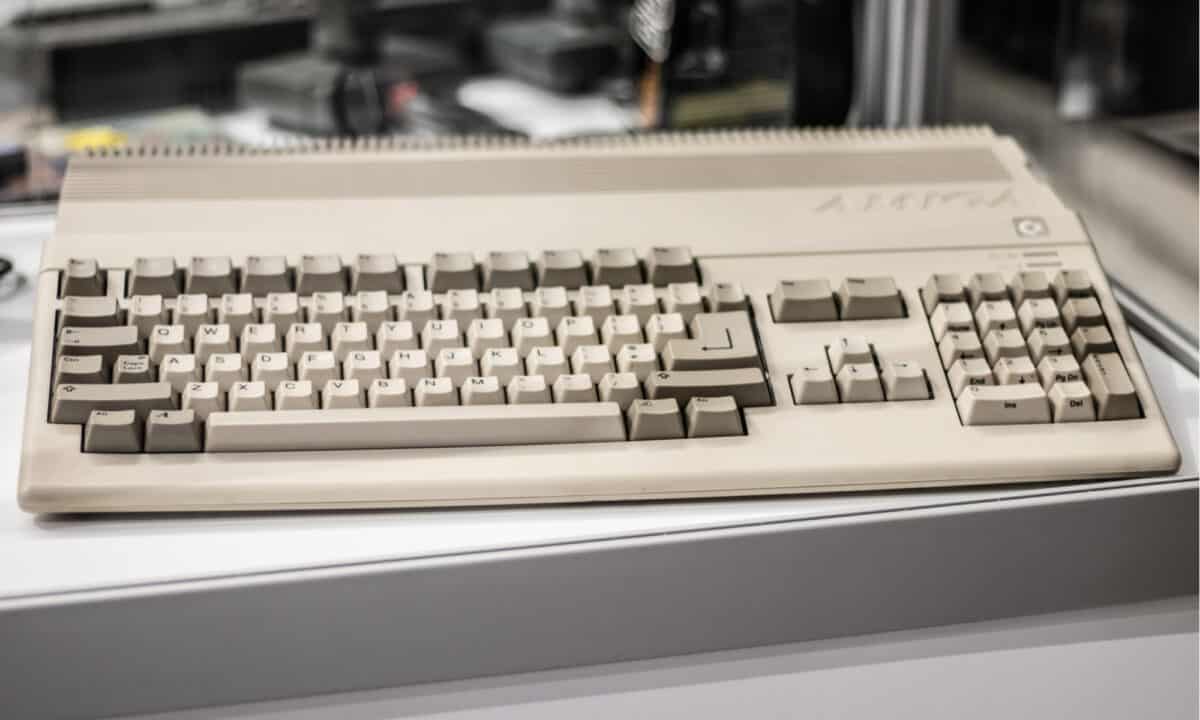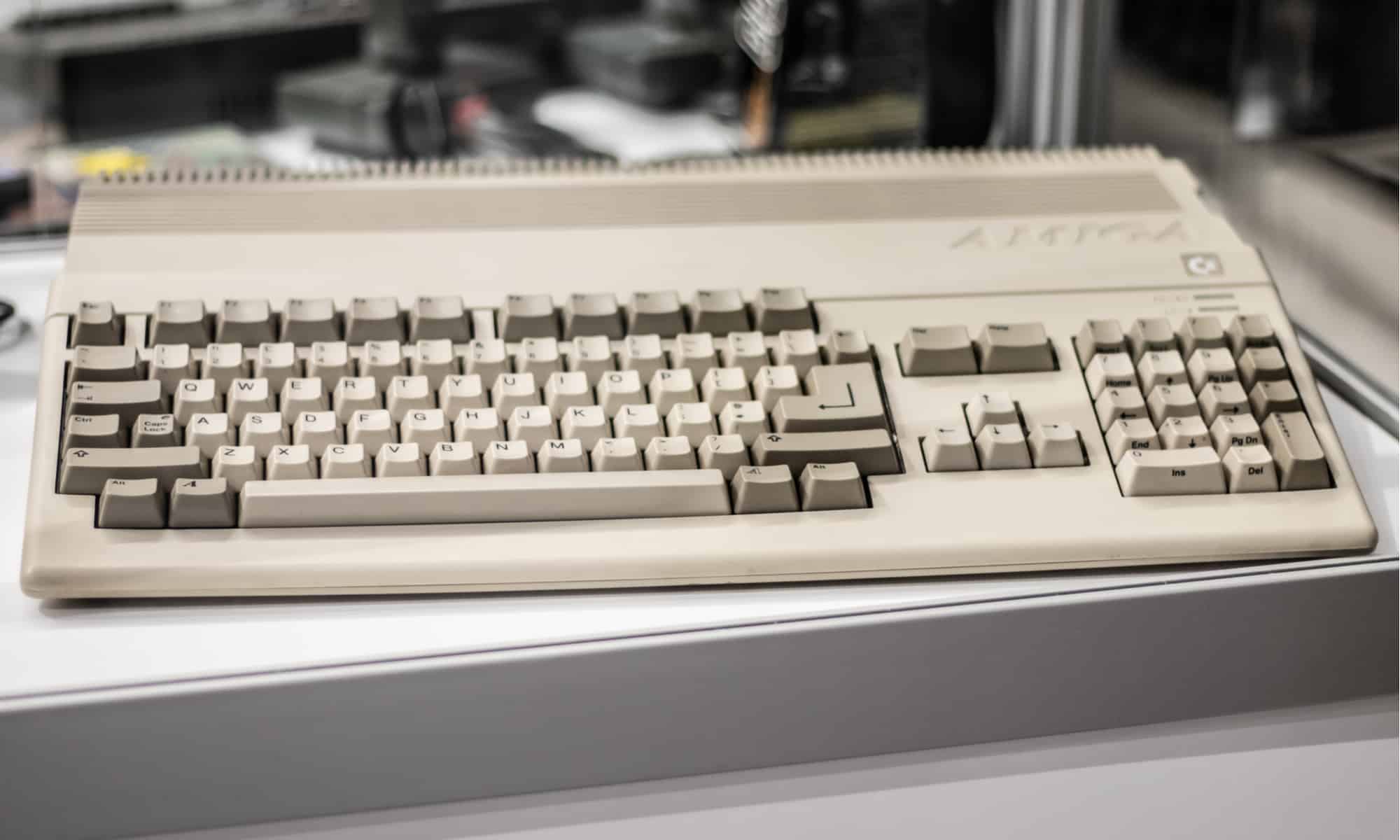Six Facts about the Amiga 500
- The Amiga 500 had its release date in 1987 for $699.
- Following a Commodore convention, designers nicknamed the unit Rock Lobster after a song by the B-52s. Users could find the name Rock Lobster imprinted on the unit’s circuit boards.
- Socketed chips allowed for easy replacement for users willing to void the warranty by opening the computer.
- The Amiga 500 design had a trap door expansion area to add a 512KB RAM upgrade.
- A side-mounted expansion slot made it easy for consumers to add peripherals like hard drives and joysticks.
- While it had trouble competing with other 16-bit machines in the US, it was one of the best-selling personal computers in Europe during this era.
The late 1980s were a transformative time for computer technology. Business computers were standard equipment in offices where IBM products dominated the market. However, the home computing market had not yet settled. IBM, Apple, Atari, and Commodore were all releasing inventions designed to deliver productivity and entertainment software to residential consumers.
The Amiga series represented Commodore’s attempts to garner the home market, and the Amiga 500 was their budget-friendly model. Although they marketed the A500 as a multi-purpose device, most users of the time remember playing games on the system.
Quick Facts
- Original price
- $699
- Units Sold
- ~10 million

The History of the Amiga 500: What to Know
During the 1980s, office employees entered data into business machines with minimal graphic capabilities. Advanced features were not necessary for creating spreadsheets. However, the home computer market had different demands. Families were looking for a system that could write documents, help children with homework, and function as a machine for playing games.
Computer manufacturers recognized that families also had budget constraints. They introduced budget-friendly personal computers to open new households to the digital age. The pros and cons of this strategy involved providing enough computing power while keeping the price low. The Amiga 500 was Commodore’s answer to this problem.
The designers at Commodore had a tradition of naming their products after songs by the B-52s during development. The A500 was known as Rock Lobster, and the manufacturer imprinted the circuit boards with this title.
Commodore released the A500 at the Consumer Electronics Show of 1987. The primary unit had a CPU with a built-in keyboard and a 3.5-inch floppy disk drive. Unlike most office machines, the Amiga included four graphics modes and four channels of 8-bit stereo output, features that made it a suitable gaming computer.
The A500 also had greater potential for expansion than other computers on the market. A trapdoor expansion port was a novel invention that gave easy access to add 512 KB RAM. This addition made the computer compatible with 1MB software. The unit features multiple I/O ports for peripherals like joysticks and external disk drives.
A design that included socketed instead of soldered circuit boards was unusual in a low-cost personal computer. Although it voided the warranty, a computer enthusiast could replace and upgrade the boards, extending the useful life of the unit.
Its price of $699 was competitive in the 16-bit machine market. However, the company had originally announced the price at $600, and this marketing stumble led to poor sales in the US. The A500 would fare better in the European market, where critics repeatedly praised it as one of the best home computers available.

Amiga 500 Versions
Amiga 500
The A500 was the original version that had its release date in 1987. Its disappointing US sales were made up for by heavy sales in the European market.
Amiga 500 Plus
Commodore released the A500 Plus in 1992. The new version had minor upgrades to the motherboard that did not do much to improve its performance. Unfortunately, these changes made the unit incompatible with popular software programs that ran on the former version. Some consumers returned their A500 Plus computers hoping to exchange them for an original A500.
Amiga 500: The Public Response
The Amiga 500 ran into several marketing problems in the US. The actual cost of $699 was $100 more than the announced price of $595. Commodore had to weigh the pros and cons of releasing the computer as a gaming machine. Their choice to allow toy stores to sell the A500 led to computer enthusiasts discounting the unit as a serious machine. Around 600,000 units were sold in North America.
The facts about the European market tell a different story. The A500 received the Computer of the Year award from “Chip,” a German computer magazine. Over 4 million units were sold throughout Europe.
The image featured at the top of this post is ©Grzegorz Czapski/Shutterstock.com.



